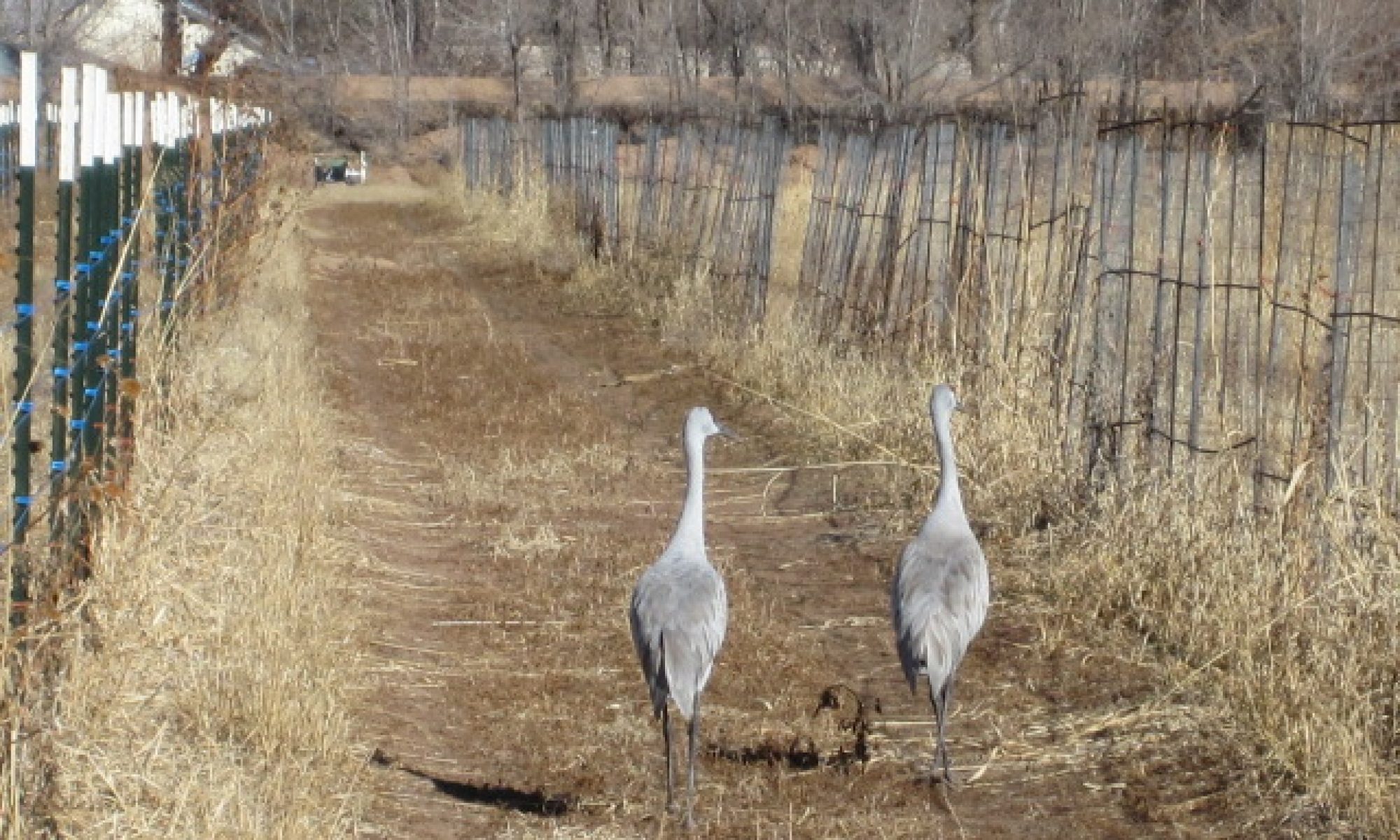If you follow the Bosque Trail along the Rio Grande south past the Nature Center, you’ll eventually come to an intersection with a cute little mini-street sign. Here you will have to make a decision. You can continue south toward Tingley Beach all the way past Rio Bravo if you’re in the mood for an out and back ride. Or, if you are a teacher, and it’s June, and you want to satisfy your curiosity about whether this trail links with Unser, you can turn right, take the I-40 trail to the west, and see what happens.
I feel like a human roller coaster as soon as I make the turn. Here the trail, its own mini-road, rises parallel to the highway. An orange metal rail swoops playfully alongside all the way across the river. My new light bike says click click click click click as I pedal up the narrow track. It’s a smaller version of the sound the Thunderbolt makes at Kennywood Park as it begins its long ascent to the top of the first hill. The ground falls away as I look up and up and up toward the cliff on the other side of the river.
As I pump into the sky, I feel a little bit like ET pedaling into the clouds. First the bosque drops away beneath me, the Rio Grande reveals its muddy bottom, and then I soar over the top branches of cottonwoods on the west bank. Finally, I chug alongside the cliff, rising to the top where I can almost look into the windows of that house with the big Christmas light display every December.
No one passes me on this roller coaster; I’m the only one with a ticket today.
Now might be a good time to mention that I don’t particularly care for roller coasters. I’m terrified of heights. I don’t see any good reason to be up in the air if I could be down on the ground.
Rather than getting more reasonable as I’ve gotten older, my fear has grown to encompass more things. I used to be afraid only when a situation was out of my control. I could climb a ladder, for instance, or traipse along a mountain ledge, or walk out and peer over the Rio Grande Gorge Bridge near Taos without any trouble.
It wasn’t until bridges started collapsing on CNN that it occurred to me to be afraid of bad engineering in every day structures. Now I don’t pull into a parking garage or drive through a tunnel without, at least for a moment, wondering if they will collapse. Likewise, I prefer upper decks of sports stadiums, assuming that it would be better to be on top than underneath if a structure came crashing to the ground.
Fortunately, these fears aren’t debilitating. For the most part, I park where I have to, drive across bridges, ride the tram when I have company in town, and live alongside these fears with little impact on my daily life.
Nevertheless, as I start up the I-40 trail, I feel the familiar wobbliness kick in.
In “The Neurobiology of Fear,” Laurel Duphiney Edmundson (whom I quote in part because I find her name delightful) notes that “the animal fear response,” which she describes as an “unspecific physiological response” is just the beginning of what happens when our bodies perceive danger. It precedes a “slower, more detailed psychological assessment of the situation, during which the individual [that would be me, on my bike on a bridge] becomes conscious of feeling afraid.”
Almost simultaneous with the wobbly feeling, I do exactly what science predicts. I think, “Huh, I am getting higher and higher above the river,” which is really cool, and “I’m terrified,” which I think I would like not to be.
For some reason, I find it comforting to know that something like my fear of heights exists in animals. Duphiney Edmundson explains that my physical response comes from “the walnut-sized structure in the forebrain called the amygdala.” I also find it comforting that she describes my amygdala as “walnut-sized,” rather than golf-ball or hailstone or brussels sprout-sized.
When I look down from that bridge, my amygdala gets busy. First, it “stimulates the hypothalamus to produce corticotropin-releasing hormone (CRH).” This release “triggers the pituitary gland’s discharge of adrenocorticotropic hormone (ACTH), which in turn stimulates the adrenal gland to secrete cortisol. Cortisol in the bloodstream causes an increase in glucose production, providing the necessary fuel for the brain and muscles to deal with stress.”
Cool, isn’t it?
Finally, “After passing through the amygdala, sensory information is sent on to the cortex” where “the frightening stimulus is examined in detail to determine whether or not a real threat exists.” I recognize this final stage. This is when I look down at the ground from the bridge and wonder if this web of concrete might actually fall into the river. My cortex being my cortex, not that of a more reasonable version of the species, gathers every image of a collapsing highway I’ve ever seen and decides that, yes, this bridge might fall down while I’m riding across it.
This morning (spoiler alert: the bridge still stands) I was reading an essay on a blog I follow, (zenhabits), in which Leo Babauta was explaining how to deal with a different anxiety. He advises, “Don’t fear it, don’t try to kill it. Instead, give it a hug. Embrace it. Accept it. Get used to it. You’re together for the long haul.”
He didn’t add, “Be grateful for it,” but he might have. When I reach the top of the hill, I am exuberant. I am proud of my lumpy body for pedaling me up that trail. As I think about it further, though, it occurs to me that riding up that long hill was easy, and I mean easy in a way it had no business being for a minimally fit person who didn’t bring enough water twelve miles into a bike ride on a hot day with a headwind.
I realize now that it was my little walnut-sized amygdala, flooding my bloodstream with cortisol and increasing my glucose production, that propelled me up that hill. It was my fear that powered my legs and kept them pedaling. I hope I remember, the next time I feel that wobbly sensation or need to outrun a wooly mammoth, to be grateful.
I’ll have a chance soon. My friend Tammy suggested we bike up the bridge and then whoosh back down the next time we ride together.
You know, down, where you pick up speed and can see the ground rushing up at you the whole time. My cortex is already afraid.
I’ll let you know if the little walnut cracks.
++++++++++++++++++++++++++++++++
Read more about “The Neurobiology of Fear”

